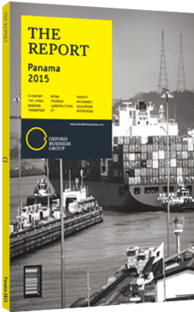Aitor Ibarreche, CEO, Panama Ports Company: Interview
Interview: Aitor Ibarreche
What changes will local ports undergo in response to the completion of the Panama Canal expansion?
AITOR IBARRECHE: Trade running from Asia to the east coast of the US continues to be the dominant contributor to the US container market. Currently, these containers arrive from Asia and are transferred at Panama’s Pacific ports. Once the canal expansion is complete, the same ship will be able to pass through the Panama Canal without transferring cargo by rail, as it must today.
High volumes of cargo are also being trans-shipped via the Pacific from the west coast of South America to the east coast of the US. With the channel expanded, bigger vessels are likely to begin passing through the canal and taking cargo directly to its destined port, which could result in a decrease in Panama’s current trans-shipment volume. However, most financial analysts predict that volumes will keep growing at a rate of 5% a year. Additionally, Panama’s ports have some of the best-equipped terminals in Latin America, as well as sufficient stacking-yard capacity.
To what extent will construction of the Corozal port enhance Panama’s competitiveness in logistics?
IBARRECHE: Panama’s Pacific ports have enough capacity to handle the existing cargo in the region. The largest and third-largest global port operators have a combined capacity of 5m twenty-foot equivalent units (TEUs), according to maritime consultancy Drewry, while the Panama Maritime Authority projects that the Pacific ports will be handling about 3.5m TEUs. In addition, the government authorised one of the operators to proceed with expansion of its facilities from 500,000 TEUs to 2m. Furthermore, the trans-shipment of global containerised cargo has not had any substantial increases in recent years, and in Panama in particular it is below the levels handled in 2012. This confirms that international containerised cargo grows in tandem with global GDP. Maritime business specialists conclude that worldwide growth projected for the next five years will average no more than 5% a year. One could therefore argue that Panama already has the necessary capacity and competitiveness to be a logistics hub.
In what ways are cargo delays at US ports affecting supply chains? What sort of opportunities does this present for Panamanian ports?
IBARRECHE: Increments in inventory have been reported, especially for dry cargo from East Asia, Europe and the west coast of South America. This stock is being rolled over until the back-log on the west coast of North America is alleviated. In such emergencies, there are certainly opportunities to take part of the cargo through Panama, either via the canal or by having it transshipped in the Pacific, loaded in the Atlantic and discharged alternatively on the US east coast. Another option is to create the necessary facilities, such as warehouses, refrigerated storage and other services, to develop an attractive product that will entice cargo already coming through the canal to stop in Panama.
What synergies would result from a common management plan in the transport and logistics sector?
IBARRECHE: The focus should be on all stakeholders working together as a team to strengthen the integrated product. This includes connectivity among the Panama Canal, ports, railroads and trucking in addition to the country’s free zones. These elements combine to make Panama the logistics hub of the Americas.
How much cooperation is there between ports to offer exporters more storage capacity?
IBARRECHE: Capacity for export containers in Panama is not an issue, unlike some claim. Exporters generally bring their containers to a port between seven and nine days before vessel departure. They try to catch a departure the same week and, if this fails, their cargo is rolled over to the following week. Some ports have been in close contact with exporters to ensure that their logistics are tailored to those of exporters, with the aim of facilitating Panama’s export capacity.
You have reached the limit of premium articles you can view for free.
Choose from the options below to purchase print or digital editions of our Reports. You can also purchase a website subscription giving you unlimited access to all of our Reports online for 12 months.
If you have already purchased this Report or have a website subscription, please login to continue.

